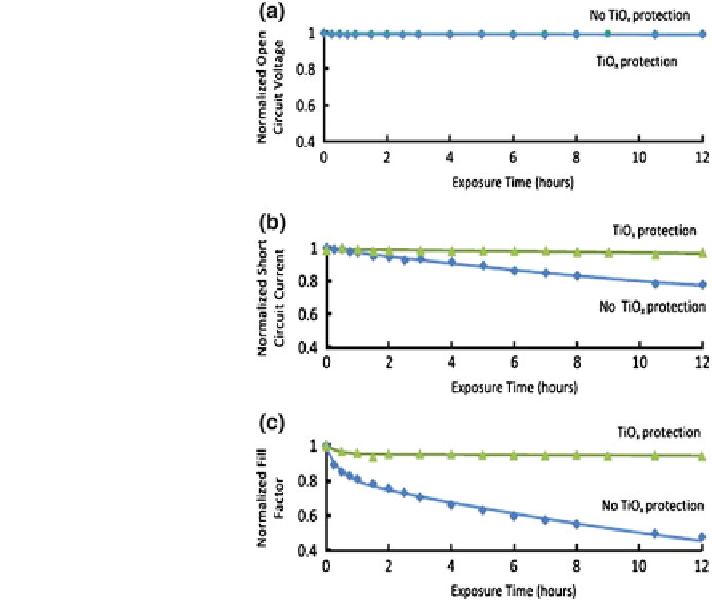Environmental Engineering Reference
In-Depth Information
Fig. 6.11 Variance of a Voc,
b Jsc, c FF with UV exposure
time when sample was
surrounded by nitrogen
atmosphere (UV power
density = 10 mW/cm2) [
35
].
(Reprinted from [
35
], with
permission from Elsevier)
and H
2
O (gas), as well as bound format [HCOO-], H
2
O, and Ti-OH moieties.
The photoactivation of these films leads to O
2
scavenging and forms the basis for
thin films, which removes oxygen upon exposed to light, thereby protecting an
underlying surface from oxygen gas.
It is worth mentioning that the TiO
x
film has a capacity of the order of 10
4
-10
5
times the quantity of O
2
needed to seriously influence the organic active layer.
Additionally, the TiO
x
film will act as a diffusion barrier for oxygen, thus further
slowing down the oxygen interaction with the active layer.
6.4.1.2 Anode Buffer Layer
Carter et al. shown polyaniline and polyethylenedioxythiophene based polymer
transparent electrodes as hole-injecting anodes by replacing ITO in polymer
OLEDs [
25
]. By varying the dopants of anodes, improved device performance was
found independent of film conductivity, morphology, and type of conducting
polymer. The results demonstrated that polymer anodes (1) create a clean
repeatable surface without oxidation or water, facilitating the adhesion to polymer
MEH-PPV; (2) partially dope the interface, forming Ohmic contacts and good

Search WWH ::

Custom Search